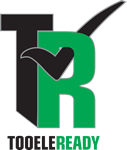Wildland Fires

Actions for Wildland Fires
Before a Wildfire
To prepare for wildfires, you should:
➤ Mark the entrance to your property with address signs that are clearly visible from the road
➤ Keep lawn trimmed, leaves raked and the roof and rain gutters free from debris such as dead limbs and leaves
➤ Stack firewood at least 30 feet away from your residence
➤ Store flammable materials, liquids, and solvents in metal containers outside your residence, at least 30 feet away from structures and wooden fences
➤ Create defensible space by thinning trees and brush within 30 feet around your residence. Beyond 30 feet, remove dead wood, debris and low tree branches
➤ Landscape your property with fire resistant plants and vegetation to prevent fire from spreading quickly. For example, hardwood trees are more fire-resistant than pine, evergreen, eucalyptus or fir trees
➤ Make sure water sources, such as hydrants, ponds, swimming pools and wells are accessible to the fire department ➤ Use fire resistant, protective roofing and material like stone, brick, and metal to your residence. Avoid using wood materials, they offer the least fire protection
➤ Cover all exterior vents, attics and eaves with metal mesh screens no larger than 6 millimeters or 1/4 inch to prevent debris from collecting and to help keep sparks out
➤ Install multi pane windows, tempered safety glass, or fireproof shutters to protect large windows from radiant heat ➤ Use fire-resistant draperies for added window protection
➤ Have chimneys, wood stoves, and all home heating systems inspected and cleaned annually by a certified specialist ➤ Insulate chimneys and place spark arresters on top. The chimney should be at least 3 feet above the roof
➤ Remove branches hanging above and around the chimney Follow Local Burning Laws Before burning debris in a wooded area, make sure you notify local authorities, obtain a burning permit and follow these guidelines:
1. Use an approved incinerator with a safety lid or covering with holes no larger than 3/4 inch.
2. Create at least a 10-foot clearing around the incinerator before burning debris. 3. Have a fire extinguisher or garden hose on hand when burning debris.
➤ Mark the entrance to your property with address signs that are clearly visible from the road
➤ Keep lawn trimmed, leaves raked and the roof and rain gutters free from debris such as dead limbs and leaves
➤ Stack firewood at least 30 feet away from your residence
➤ Store flammable materials, liquids, and solvents in metal containers outside your residence, at least 30 feet away from structures and wooden fences
➤ Create defensible space by thinning trees and brush within 30 feet around your residence. Beyond 30 feet, remove dead wood, debris and low tree branches
➤ Landscape your property with fire resistant plants and vegetation to prevent fire from spreading quickly. For example, hardwood trees are more fire-resistant than pine, evergreen, eucalyptus or fir trees
➤ Make sure water sources, such as hydrants, ponds, swimming pools and wells are accessible to the fire department ➤ Use fire resistant, protective roofing and material like stone, brick, and metal to your residence. Avoid using wood materials, they offer the least fire protection
➤ Cover all exterior vents, attics and eaves with metal mesh screens no larger than 6 millimeters or 1/4 inch to prevent debris from collecting and to help keep sparks out
➤ Install multi pane windows, tempered safety glass, or fireproof shutters to protect large windows from radiant heat ➤ Use fire-resistant draperies for added window protection
➤ Have chimneys, wood stoves, and all home heating systems inspected and cleaned annually by a certified specialist ➤ Insulate chimneys and place spark arresters on top. The chimney should be at least 3 feet above the roof
➤ Remove branches hanging above and around the chimney Follow Local Burning Laws Before burning debris in a wooded area, make sure you notify local authorities, obtain a burning permit and follow these guidelines:
1. Use an approved incinerator with a safety lid or covering with holes no larger than 3/4 inch.
2. Create at least a 10-foot clearing around the incinerator before burning debris. 3. Have a fire extinguisher or garden hose on hand when burning debris.
During a Wildfire
If a wildfire threatens your home and time permits, take the following precautions:
➤ Shut off gas at the meter. Only a qualified professional can safely turn the gas back on
➤ Seal attic and ground vents with precut plywood or commercial seals
➤ Turn off propane tanks
➤ Place combustible patio furniture inside
➤ Connect garden hose to outside taps. Place lawn sprinklers on the roof and near above ground fuel tanks. Wet the roof
➤ Wet or remove shrubs within 15 feet of your residence
➤ Gather fire tools, such as a rake, axe, handsaw or chainsaw, bucket and shovel
➤ Back your car into the garage or park it in an open space facing the direction of escape. Shut doors and roll up windows. Close garage windows and doors, but leave them unlocked. Disconnect automatic garage door openers
➤ Open fireplace damper. Close fireplace screens
➤ Close windows, vents, doors, blinds or noncombustible window coverings, and heavy drapes. Remove flammable drapes and curtains
➤ Move flammable furniture into the center of the residence away from windows and sliding glass doors
➤ Close all interior doors and windows to prevent drafts
➤ Place valuables that will not be damaged by water in a pool or pond If advised to evacuate, do so immediately.
➤ Shut off gas at the meter. Only a qualified professional can safely turn the gas back on
➤ Seal attic and ground vents with precut plywood or commercial seals
➤ Turn off propane tanks
➤ Place combustible patio furniture inside
➤ Connect garden hose to outside taps. Place lawn sprinklers on the roof and near above ground fuel tanks. Wet the roof
➤ Wet or remove shrubs within 15 feet of your residence
➤ Gather fire tools, such as a rake, axe, handsaw or chainsaw, bucket and shovel
➤ Back your car into the garage or park it in an open space facing the direction of escape. Shut doors and roll up windows. Close garage windows and doors, but leave them unlocked. Disconnect automatic garage door openers
➤ Open fireplace damper. Close fireplace screens
➤ Close windows, vents, doors, blinds or noncombustible window coverings, and heavy drapes. Remove flammable drapes and curtains
➤ Move flammable furniture into the center of the residence away from windows and sliding glass doors
➤ Close all interior doors and windows to prevent drafts
➤ Place valuables that will not be damaged by water in a pool or pond If advised to evacuate, do so immediately.
Choose a route away from the fire hazard. Watch for changes in the speed and direction of the fire and smoke. Wildfires are a natural part of the ecosystem. The area in which homes and other human development intermingle with wildlands is referred to as the urban/wildland interface. The meeting of wildland and residential areas presents a serious threat to life and property. On August 24, 1990, the Wasatch Mountain Fire began west of Helper Valley and burned for six days. The fire burned 2,970 acres, destroyed 18 homes and killed two firefighters. Since 2002 wildfires have consumed more than two and a half million acres of Utah land. Wildfires greatly increase the threat of flooding and mud-slides by stripping the native vegetation that holds the soil in place. This decreases the soil’s ability to absorb water, resulting in faster runoff from storms and snow melt.

